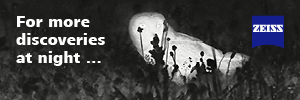Nutcracker (talk | contribs) m (typo) |
(date on photo) |
||
| Line 1: | Line 1: | ||
| − | [[Image:Tit mouse cloured penduline - bilen .jpg|thumb|550px|right|Photo by {{user|volker+sthamer|volker sthamer}}<br />Bilen, [[Ethiopia]] ]] | + | [[Image:Tit mouse cloured penduline - bilen .jpg|thumb|550px|right|Photo by {{user|volker+sthamer|volker sthamer}}<br />Bilen, [[Ethiopia]], December 2010]] |
'''Alternative name: Mouse-coloured Tit''' | '''Alternative name: Mouse-coloured Tit''' | ||
;[[:Category:Anthoscopus|Anthoscopus]] musculus | ;[[:Category:Anthoscopus|Anthoscopus]] musculus | ||
Revision as of 14:26, 9 June 2015
Alternative name: Mouse-coloured Tit
- Anthoscopus musculus
Identification
8 cm. A tiny passerine.
- Short, pointed conical bill
- Dull brownish-grey head and upperparts
- Darker wings and tail
- Off-white chin, throat and underparts, lightly washed buff on belly and undertail-coverts
- Very short tail
Sexes similar. Juveniles are slightly warmer brown on upperparts.
Similar species
African Penduline Tit has more buffy underparts.
Distribution
Eastern Africa: from east South Sudan to Ethiopia, Somalia, northeast Uganda, Kenya and extreme northeast Tanzania.
Common in parts of its range but easily overlooked due to its tiny size and inhospitable habitat.
Taxonomy
This is a monotypic species.
Forms a superspecies with African Penduline Tit, Sennar Penduline Tit, Yellow Penduline Tit and Cape Penduline Tit.
Habitat
Dry savanna and shrubland. Occurs between 400 and 1600 m in plains and foothills.
Behaviour
Diet
Feeds probably on small insects and their larvae. Usually forages in family groups or pairs, often associated with other small birds. A very active bird, moving constantly in scrubby bushes or acacias. Swings upside-down like other penduline tits.
Breeding
Breeding season February to March and September to Otober in Ethiopia, April to May in Kenya, November in Somalia and December in South Sudan. The nest is a pear-shaped pouch made of soft plant fibres. It includes a false entrance hole with a false chamber to confuse predators. The true entrance is concealed by a flap which is secured by the parents when they leave. The nest looks very similar to the one of African Penduline Tit. Lays 4 eggs.
Movements
Presumed to disperse during extreme drought.
Reference
- Clements, J. F., T. S. Schulenberg, M. J. Iliff, D. Roberson, T. A. Fredericks, B. L. Sullivan, and C. L. Wood. 2014. The eBird/Clements checklist of birds of the world: Version 6.9., with updates to August 2014. Downloaded from http://www.birds.cornell.edu/clementschecklist/download/
- Gill, F and D Donsker (Eds). 2015. IOC World Bird Names (version 5.2). Available at http://www.worldbirdnames.org/.
- Handbook of the Birds of the World Alive (retrieved June 2015)
Recommended Citation
- BirdForum Opus contributors. (2024) Mouse-coloured Penduline Tit. In: BirdForum, the forum for wild birds and birding. Retrieved 26 April 2024 from https://www.birdforum.net/opus/Mouse-coloured_Penduline_Tit




